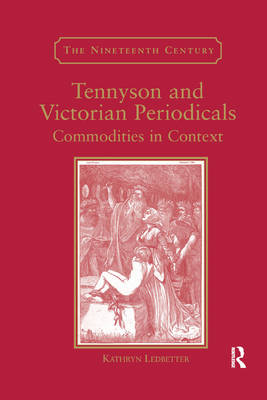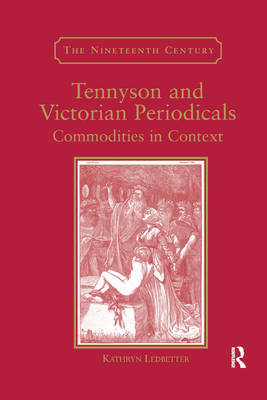
- Afhalen na 1 uur in een winkel met voorraad
- Gratis thuislevering in België vanaf € 30
- Ruim aanbod met 7 miljoen producten
- Afhalen na 1 uur in een winkel met voorraad
- Gratis thuislevering in België vanaf € 30
- Ruim aanbod met 7 miljoen producten
Zoeken
€ 40,95
+ 81 punten
Uitvoering
Omschrijving
This is the first book-length study of Tennyson's record of publication in Victorian periodicals. Despite Tennyson's supposed hostility to periodicals, Ledbetter shows that he made a career-long habit of contributing to them and in the process revealed not only his willingness to promote his career but also his status as a highly valued commodity. Tennyson published more than sixty poems in serial publications, from his debut as a Cambridge prize-winning poet with "Timbuctoo" in the Cambridge Chronicle and Journal to his last public composition as Poet Laureate with "The Death of the Duke of Clarence and Avondale" in The Nineteenth Century. In addition, poems such as "The Charge of the Light Brigade" were shaped by his reading of newspapers. Ledbetter explores the ironies and tensions created by Tennyson's attitudes toward publishing in Victorian periodicals and the undeniable benefits to his career. She situates the poet in an interdependent commodity relationship with periodicals, viewing his individual poems as textual modules embedded in a page of meaning inscribed by the periodical's history, the poet's relationship with the periodical's readers, an image sharing the page whether or not related to the poem, and cultural contexts that create new meanings for Tennyson's work. Her book enriches not only our understanding of Tennyson's relationship to periodical culture but the textual implications of a poem's relationship with other texts on a periodical page and the meanings available to specific groups of readers targeted by individual periodicals.
Specificaties
Betrokkenen
- Auteur(s):
- Uitgeverij:
Inhoud
- Aantal bladzijden:
- 244
- Taal:
- Engels
- Reeks:
Eigenschappen
- Productcode (EAN):
- 9780367882471
- Verschijningsdatum:
- 12/12/2019
- Uitvoering:
- Paperback
- Formaat:
- Trade paperback (VS)
- Afmetingen:
- 156 mm x 233 mm
- Gewicht:
- 459 g

Alleen bij Standaard Boekhandel
+ 81 punten op je klantenkaart van Standaard Boekhandel
Beoordelingen
We publiceren alleen reviews die voldoen aan de voorwaarden voor reviews. Bekijk onze voorwaarden voor reviews.











